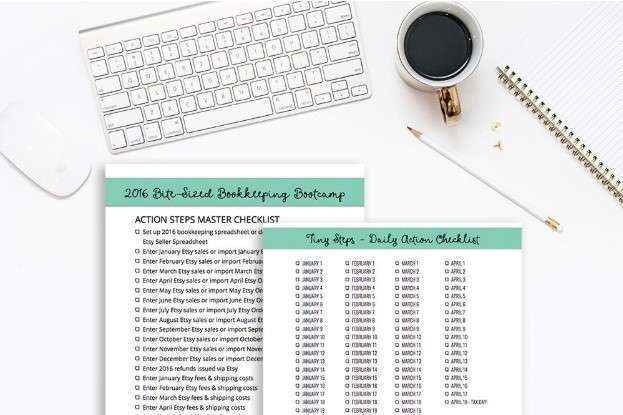In the direct method, the presentation of cash flows from operating activities section is the same as the cash flows from investing activities and cash flows from financing activities section. The direct cash flow method, also known as the income statement method, focuses on presenting a business’s actual cash inflows and outflows. This method requires a detailed breakdown of cash receipts and payments from various activities, such as operating, investing, and financing. The direct method is one of two accounting treatments used to generate a cash flow statement. The statement of cash flows direct method uses actual cash inflows and outflows from the company’s operations, instead of modifying the operating section from accrual accounting to a cash basis.
What is the Direct Method for Cash Flow Statements?
So therefore, your net profit is the result of all of the transactions that are recorded on your profit and loss report. On the indirect cash flow, you have to then work through your cash https://parliamentobserver.com/2024/05/03/navigating-financial-growth-leveraging-bookkeeping-and-accounting-services-for-startups/ inclusions and exclusions to get to the final net cash figure. Your direct cash flow report is a more structured way of tracking your banks income statement over a certain period of time.
Access the latest business knowledge in Finance
Understanding the differences between these methods is crucial for financial professionals and stakeholders alike, as it can impact the interpretation and analysis of cash flow statements. Regardless of the chosen method, accurate and transparent financial reporting is essential for making informed decisions and assessing a company’s financial health. The cash flow statement is crucial for a company’s finances and for understanding the overall health of the business.
What is the Indirect Method for Cash Flow Statements?
Whenever given a choice between the indirect and direct methods in similar situations, accountants choose the indirect method almost exclusively. The American Institute of Certified Public Accountants reports that approximately 98% of all companies choose the indirect method of cash flows. Luckily, when using a dynamic and intuitive financial planning tool like Finmark from BILL, you can easily create and manage your cash flow statement as well as your balance sheet and income statement. Since the method isn’t directly calculating the net cash flow using the actual cash transactions during the period, the indirect method may not properly account for the timing of such outflows and inflows. The indirect method for building cash flow statements starts with the net income provided in the income statement.
Direct vs. Indirect Cash Flow
This means you may need to take additional actions, such as accounting for earnings before taxes and interest, and making adjustments for non-operating expenses such as accounts payable and depreciation. But there are several ways in which these can be put together, which may give different figures. Understanding the difference between direct and indirect cash flow reporting and which will be better-suited to your business is vital in ensuring your financial reporting is accurate and relevant. Conversely, the cash flow direct method measures only the cash that’s been received, which is typically from customers and the cash payments or outflows, such as to suppliers. Kepion enables businesses to capture and analyze cash flow data at a granular level, facilitating detailed budgeting and forecasting of cash inflows and outflows.
Oxygen Business Account Review & Alternatives
Both methods tell the same story about how cash moves around in the business, but from different perspectives. The direct method, on the other hand, is often the best choice for smaller businesses, as the transparency into operating cash flow details helps them better determine their short-term cash availability planning needs. It may not always get the most love, but your cash flow statement is a vital part of your reporting story. That’s why, in this post, we’re going to talk all about choosing the best cash flow method for your business.
If you want to get started with your direct or indirect cash flow statements, grab our free 3-statement model Excel or Google Sheets template. For internal decision-making, management might prefer the direct method as it provides detailed insights into cash transaction patterns. However, for overall financial reporting and performance review, they might lean towards the indirect method for its summarization of cash flows.
Components of the indirect cash flow method
- The indirect method uses increases and decreases in balance sheet line items to modify the operating section of the cash flow statement from the accrual method to the cash method of accounting.
- You do not need to include other information from the company’s income statement.
- The first adjustment was to add back the depreciation expense of $25,000, which is a non-cash item that reduces net income but does not affect cash flows.
- Essentially, the accountant will convert net income to actual cash flow by de-accruing it through a process of identifying any non-cash expenses for the period from the income statement.
- Many accountants prefer the indirect method because it is simple to prepare the cash flow statement using information from the other two common financial statements, the income statement and balance sheet.
While favored by financial guides, the direct method can be difficult and time-consuming; the itemization of cash disbursements and receipts is a labor-intensive process. To add to the complexity, the Financial Accounting Standards Board (FASB) requires a report disclosing reconciliation from all businesses utilizing the direct method. The monthly accounting close process for a nonprofit organization involves a series of steps to ensure accurate and up-to-date financial records. Accruing tax liabilities in accounting involves recognizing and recording taxes that a company owes but has not yet paid.
Powerful Benefits of Accounts Payable Automation
Understanding the preferences and needs of different stakeholders can guide this choice, ensuring the cash flow statement serves its intended purpose effectively. Since depreciation and amortization are expenses that reduce net income but accounting services for startups don’t involve any actual cash outflow, they’re added back to the net income. These adjustments represent the allocation of the cost of tangible and intangible assets over their useful lives, respectively, rather than a cash expense.
Getting paid is a key moment for your business – it means that your product fit and marketing strategy has hit the mark and customers are happy to exchange… There are several key differences between the direct method and the indirect method. After this, you can add the change in cash to the cash at the beginning of the period to arrive at the final cash balance. You also need to list any investments, such as new purchases and the sale of certain assets. You may need to include information such as a company purchasing new equipment or other assets.
We’ll also look at the main differences between the two so that you can make the right decision for your business accounts. Further, the indirect method for building cash flow statements could provide a less accurate depiction of the business’s current cash positioning. With this, the direct and indirect methods respectively offer different perspectives on cash flow calculation. The direct method uses all cash transactions, making the calculations simple and easy to grasp.
But one of the main ways of working on a statement of cash flow is via either the direct method, or the indirect method. A cash flow statement is one of the most important tools you have when managing your firm’s finances. It offers investors and other stakeholders a clear picture of all the transactions taking place and the overall health of the business. The items added back include amounts of depletion that were expensed, amortization of intangible assets such as patents and goodwill, and losses from disposals of long term assets or retirement of debt. If your team hasn’t prepared a direct method cash flow statement in years but has 10+ years of experience using the indirect method, this is likely the better choice.















